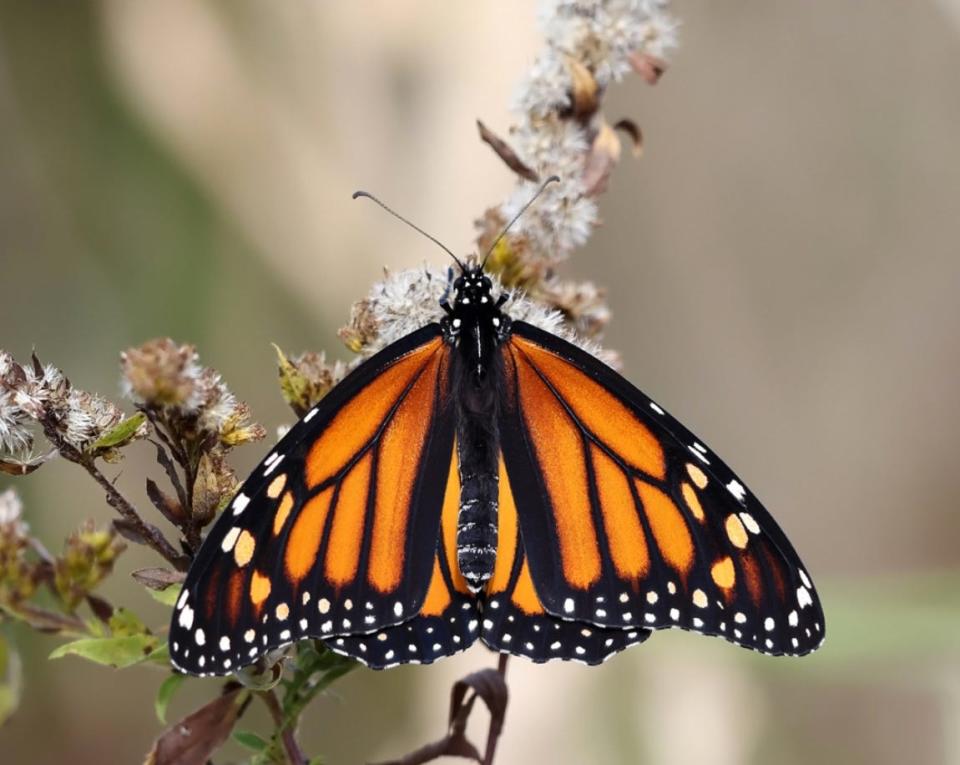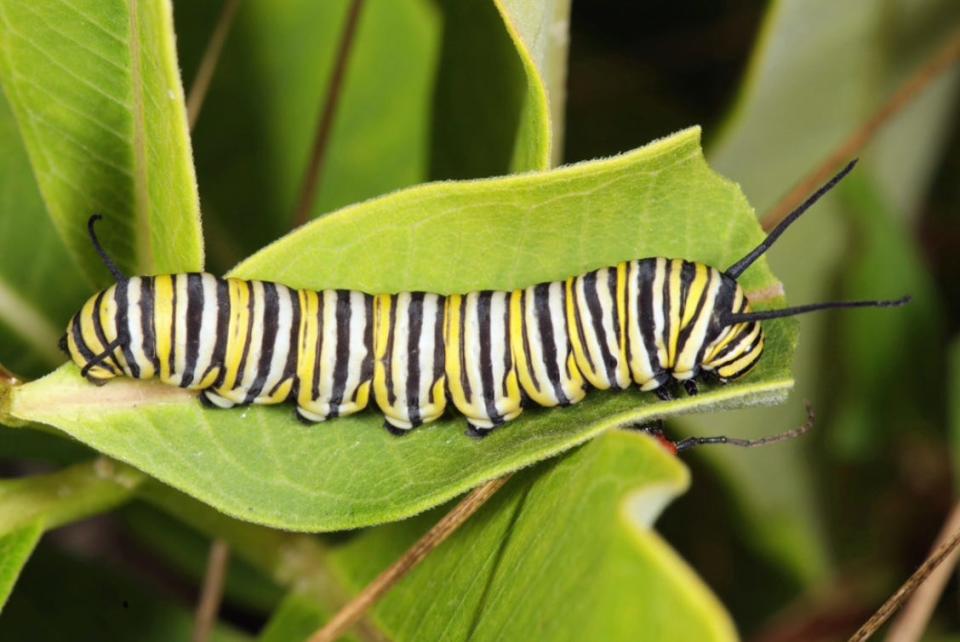Outdoors: There plenty to know about butterflies, the over 20,000 species of them

Thursday, March 14, is National Learn About Butterflies Day. So let’s see what you already know.
∎ Did you know there are over 20,000 species of butterflies?
∎ Did you know that some butterflies live for only one or two weeks, while the Monarch, that emerged in early fall, may live up to eight months as it migrates 3,000 miles to Mexico?
∎ Did you know that the butterfly has three principal parts: head, thorax and abdomen? All six legs and four wings are attached to the thorax.
∎ Did you know that butterflies have no heart and no brain? But they certainly do not lack courage.
∎ Did you know that butterflies drink flower nectar through their proboscis? It’s like a doubled straw which curls up under the butterfly’s mouth when not in use.
∎ Did you know that as global temperatures rise even a few degrees, flowers dry up sooner and nectar resources become more scarce for butterflies?
∎ Did you know that our once ubiquitous Monarch butterfly is now listed as an endangered species by the International Union for Conservation of Nature?
As you browse through garden catalogues and magazines which beckon you to buy beautiful flowers, why not consider plants which benefit butterflies and are lovely in your garden? A butterfly garden can be as small as a container on your deck, or a corner patch in your garden, or a sun-filled large garden dedicated to the nymphs and satyrs, tigers and elfins of our butterfly world.
Butterflies have four requirements as they grow from egg, to caterpillar, to chrysalis, to finally emerge as a beautiful butterfly.
The first requirement is protection from pesticides and herbicides. That means using none of the ‘cides on your lawn or in your garden. After all, cide means killing or killer. Who wants children and pets playing on a lawn treated with a ‘cide? Who wants a monoculture of grass, anyway? Boring to look at. What’s wrong with lavender violets, yellow dandelions, blue bluets, and pink clover complementing the green of your grass? Think of it as nature’s colorful bouquet, at your footstep.
Did you know that more than 75% of Earth’s flowering plants depend upon pollinators? But theses pollinators are in drastic decline due to pesticides, global warming, invasive species, and loss of habitat due to expanding human population.

The second requirement for butterflies is a source of water. It can be a bird bath. Mine sits on my stonewall. I have seen butterflies, birds, and even foxes drink from it. A source of water can be as simple as a rock with a depression in it, or a shallow dish filled with water. What’s important to remember is to change the water frequently, especially as the summer heats up.
The third requirement is food for caterpillars. Donna Williams of Grafton has created gardens for butterflies and caterpillars. I am indebted to her for her many suggestions. For Monarch caterpillars, she has planted swamp milkweed; for black swallowtail caterpillars: dill, fennel, carrot, and parsley; for eastern tiger swallowtails: tulip poplar tree and wild cherry; for American and painted ladies: daisy, hollyhock, and pearly everlasting; for spicebush swallowtails: spicebush.
The fourth requirement is nectar for the butterflies. Monarchs enjoy the nectar from butterfly weed, swamp milkweed, lilac, red clover, tall verbena, lantana, goldenrod and thistle. Black swallowtails are attracted to Queen Anne’s lace, parsley, dill, fennel, red clover, milkweed, and thistles. Eastern tiger swallowtails require the nectar from bee balm, wild cherry, lilac, violets, zinnias or purple coneflowers. The American and painted ladies appreciate goldenrod, aster, zinnia and milkweed.
Additional plants which will provide for the needs of caterpillars and butterflies are: shasta daisy, black-eyed Susan, cardinal flower, phlox, cosmos, sedums, ironweed, mountain laurel, verbena, vetch, turtle-head, globe thistle, Joe-pye-weed, marigolds, dogbane, weigela, butterfly weed (which is actually a species of milkweed), daylilies, coreopsis, sweet pepper bush, pussy willow, sneezeweed, and not to be overlooked, rotting fruit.
Trees such as birch, ash, cottonwood, red maple, sugar maple, sassafras and willow are important, too. They provide structure, sap, and shelter when there are strong winds. Garden plants help the butterflies as well: chives, mountain mint, raspberry, thyme, catmint, blackberry, blueberry, sorrel and lavender.
You may find that you have been growing some of these plants for years without realizing how much you have benefitted butterflies. So, thank you from all creatures small and really small.
If you are motivated to create even a small butterfly garden, you will be rewarded by those who, besides butterflies, also need the life support you have provided: hummingbirds, moths, and bees (there are almost 4,000 species of native bees in the USA).
Your human friends will enjoy your butterfly garden, too.
—The late Mark Blazis contributed to this column. Contact Helen Blazis at MarkBlazisSafaris@gmail.com
This article originally appeared on Telegram & Gazette: Outdoors: There's plenty to know about butterflies

